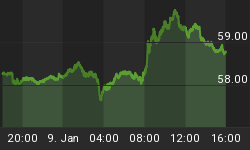Economic data and corporate earnings reports released this week continued to indicate that economic activity was mixed in March. After months of strong growth, the manufacturing sector has started showing signs that growth has started to slow.
Last week the Commerce Department reported that housing starts dropped 17.6% to a 1.84 million unit rate in March compared to February. Economists expected a much more modest decline to 2.09 million. Any fears that surfaced last week were quickly dispelled this week by the existing home sales report and the new home sales report. Existing home sales increased slightly to an annualized 6.89 million unit rate, slightly better than the 6.79 million economists predicted. New home sales went through the roof. New home sales surged 156,000 units to an annualized 1.431 million unit pace in March. Economists were expecting a slight decline to 1.19 million. This eclipsed the previous record number of new home sales by 127,000 units, which was set in October 2004.
While housing has remained strong, the manufacturing sector has started to show signs of stalling. Durable goods orders dropped 2.8% in March from the previous month and 2.8% year-over-year as well. The 2.8% monthly decline was the largest since September 2002, and it was the first year-over-year decline since August 2003. There was a large decline in transportation orders, down 7.8% month-over-month and down 16.8% year-over-year. Excluding transportation, orders still declined 1.0% from February, but did advance by 3.4% over last year. Shipments only increased by 2.2% from a year ago, this was the lowest increase since August 2003.
Also pointing to weaker economic activity was the decline in consumer confidence, which dropped 5.3 points to 97.7 in March. This was the third consecutive decline and is the lowest reading since November 2004. Previously, the weakness has been in consumer's expectations, which has dropped every month this year, while sentiment on the present situation has increased since November 2004. Consumers got more pessimistic regarding the present situation in April. The present situation component dropped 3.4 points to 113.6 and expectations dropped 6.5 points to 87.2. This is the lowest since July 2003.
The percent of respondents that think there will be more jobs available in six months fell 1.5 percentage points to 17.8%, the lowest since March 2003. Additionally the percent that anticipate fewer jobs will be available increased to 18.0% from 15.8% last month. The outlook on wage gains is more pessimistic as well. Only 16.3% expect their income in increase of the next six months, which is the lowest since July 2003.
First quarter earnings have continued to beat expectations. Of the 310 S&P 500 companies that have reported first quarter earnings, 206, or 66.5% have exceeded estimates. Only 18.7% have not met expectations. Furthermore, earnings growth is now running 13.3% better than a year ago. This is quite a bit higher than the 8.2% growth expected at the beginning of April. Similar to last quarter, companies are guiding investors to not expect the rosy results they have grown accustomed to. Earnings growth estimates for the second quarter have dropped to 7.1% last Friday from 8.8% at the beginning of the month.
DuPont reported that raw material costs were higher than the company expected, but the company was able to increase prices faster than the increase in raw materials for the third consecutive quarter. Price increases adding 24 cents per share, while higher raw materials cost reduced profits by 19 cents per share. Prices are expected to increase faster than costs again in the second quarter. Volumes growth declined to 2% from 5% last quarter due to falling sales of paint and plastics to automakers. The company said that "raw-material costs are now much higher than anyone expected."
US Steel reported a 680% increase in income for the first quarter on a 29% increase in revenue. The company did not meet its shipments expectation for the quarter saying that inventories at service centers got too high. The company did cut its forecast on total tons shipped this year from 15.4 million tons to 14.5 million. Higher prices more than offset the decline in shipments and the company said that its "contract price increases were pretty material." Adding, "Last year, the customers didn't pay up at all. It's more of a catch up." For its flat-rolled products, US Steel experienced a decline in the spot price, but its average contract price increased by $27 per ton.
It is interesting to note that reports from companies and the economic data indicate that activity slowed during March. This was the same time long-term interest rates moved to the highest level since July 2004. I doubt it is coincidental that the economy started to stagnate as interest rates increased. The yield on the 10-year Treasury jumped from under 4.0% on February 9 to over 4.6% on March 22. Now that long-term interest rates have declined back to the low 4% range, it is likely that economic activity will pick up again.
On Thursday investors will find out how fast the economy expanded during the first quarter. Up until March all indications were that the economy was at risk of overheating. Economists were busy raising GDP growth estimates in order not to be left behind. This has changed over the past month as economic data and corporate earnings indicate that the economy has lost momentum. We previously mentioned that Ed Hyman at ISI Group raised his first quarter GDP forecasts from 3.0% at the beginning of February all the way to 4.5% at the end of February. Over the past month he has since lowered his estimate for first quarter GDP growth to 3.5%.















